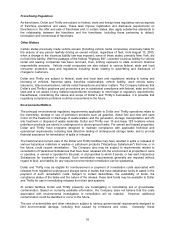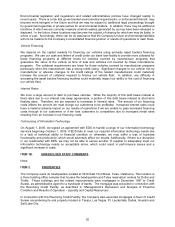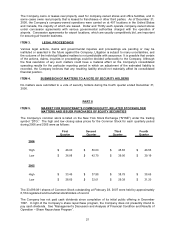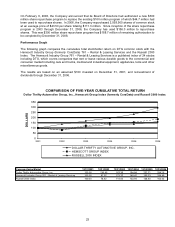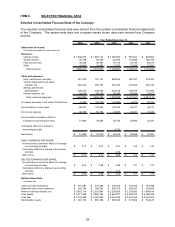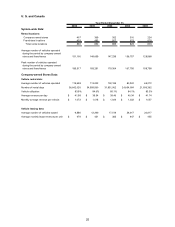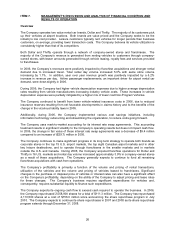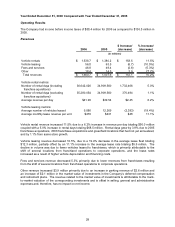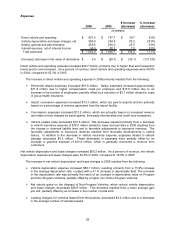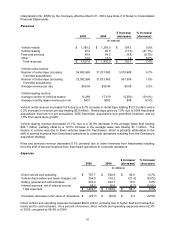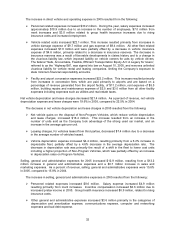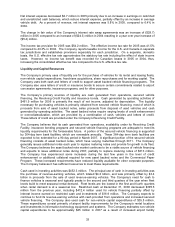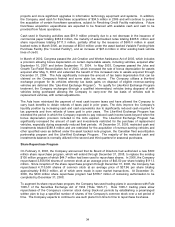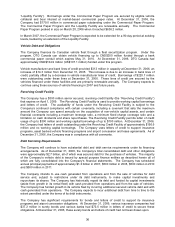Thrifty Car Rental 2006 Annual Report Download - page 32
Download and view the complete annual report
Please find page 32 of the 2006 Thrifty Car Rental annual report below. You can navigate through the pages in the report by either clicking on the pages listed below, or by using the keyword search tool below to find specific information within the annual report.
ITEM 7. MANAGEMENT’S DISCUSSION AND ANALYSIS OF FINANCIAL CONDITION AND
RESULTS OF OPERATION
Overview
The Company operates two value rental car brands, Dollar and Thrifty. The majority of its customers pick
up their vehicles at airport locations. Both brands are value priced and the Company seeks to be the
industry’s low cost provider. Leisure customers typically rent vehicles for longer periods than business
customers, on average, providing lower transaction costs. The Company believes its vehicle utilization is
consistently higher than that of its competitors.
Both Dollar and Thrifty operate through a network of company-owned stores and franchisees. The
majority of the Company’s revenue is generated from renting vehicles to customers through company-
owned stores, with lesser amounts generated through vehicle leasing, royalty fees and services provided
to franchisees.
In 2006, the Company’s revenues were positively impacted by franchise acquisitions and stronger rental
demand due to increased travel. Total rental day volume increased 5.0% with same store volume
increasing by 1.1%. In addition, year over year revenue growth was positively impacted by a 6.2%
increase in revenue per day. Airline passenger enplanements, an important driver for airport rental car
demand, were down slightly in 2006.
During 2006, the Company had higher vehicle depreciation expenses due to higher average depreciation
rates resulting from vehicle manufacturers increasing industry vehicle costs. These increases in vehicle
depreciation expense were partially mitigated by a higher mix of lower cost Non-Program Vehicles.
The Company continued to benefit from lower vehicle-related insurance costs in 2006, due to reduced
insurance reserves resulting from net favorable developments in claims history and to the benefits of the
change in the vicarious liability laws in 2005.
Additionally, during 2006, the Company implemented various cost savings initiatives, including
information technology outsourcing and streamlining the organization, to reduce costs going forward.
The Company uses mark-to-market accounting for its interest rate swap agreements. This accounting
treatment results in significant volatility to the Company’s operating results but does not impact cash flow.
In 2006, the change in fair value of these interest rate swap agreements was a decrease of $9.4 million
compared to an increase of ($29.7) million in 2005.
The Company continues to make significant progress in its long term strategy to operate both brands as
corporate stores in the top 75 U.S. airport markets, the top eight Canadian airport markets and in other
key leisure destinations, and to operate through franchisees in the smaller markets and in markets
outside the U.S. and Canada. During 2006, the Company acquired franchise operations for Dollar and
Thrifty in 16 U.S. markets and rental day volume increased approximately 3.9% in company-owned stores
as a result of these acquisitions. The Company generally expects to continue to fund all remaining
franchisee acquisitions with cash from operations.
The Company’s profitability is primarily a function of the volume and pricing of rental transactions,
utilization of the vehicles and the volume and pricing of vehicles leased to franchisees. Significant
changes in the purchase or disposal price of vehicles or interest rates can also have a significant effect
on the Company’s profitability, depending on the ability of the Company to adjust pricing and lease rates
for these changes. The Company’s business requires significant expenditures for vehicles and,
consequently, requires substantial liquidity to finance such expenditures.
The Company expects its ongoing cash flow to exceed cash required to operate the business. In 2006,
the Company repurchased 2,558,900 shares for a total of $111.3 million. The Company has repurchased
4,110,500 shares at a cost of $156.0 million since announcing the share repurchase program in July
2003. The Company expects to continue its share repurchases in 2007 and 2008 as its share repurchase
program extends through December 31, 2008.
26


